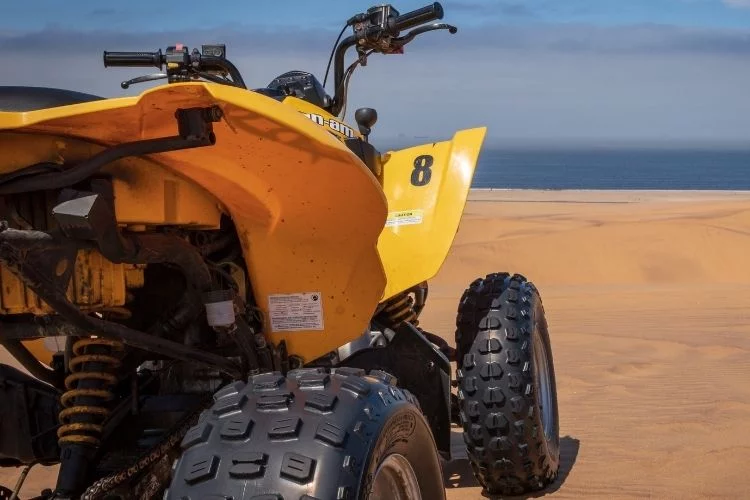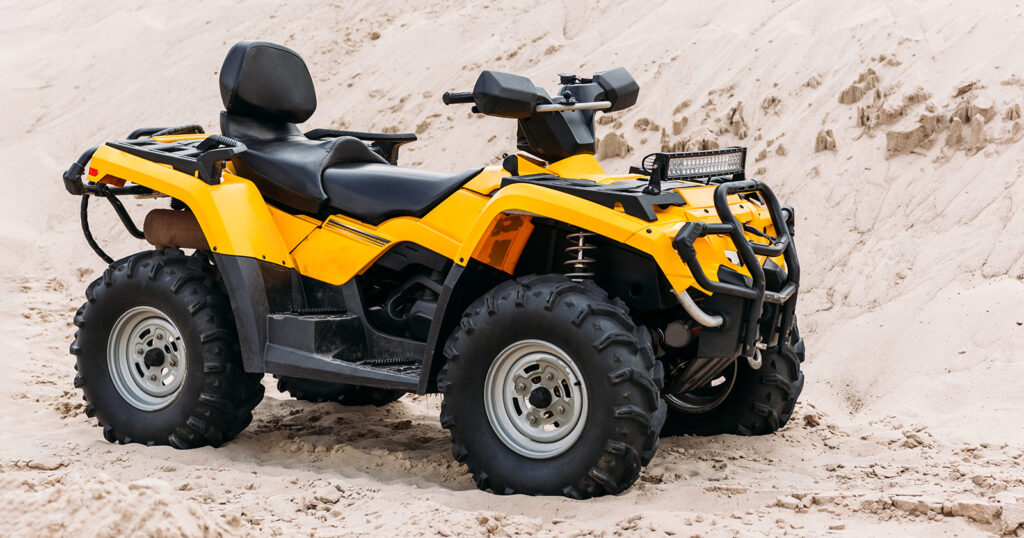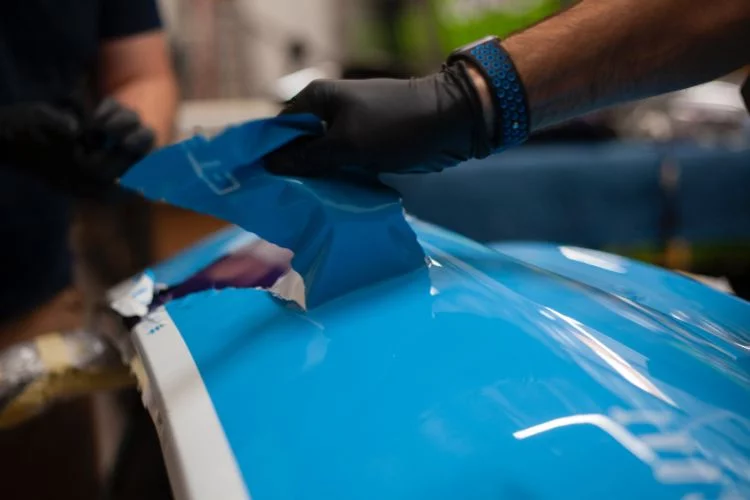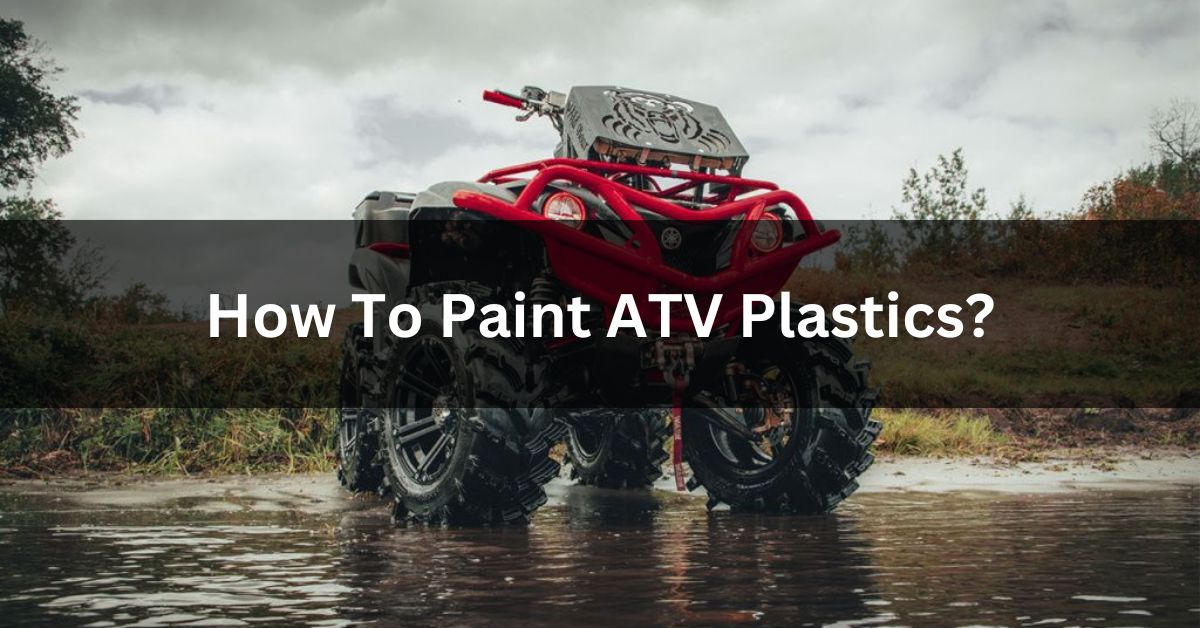Revamping the appearance of your ATV’s plastics can introduce a fresh, renewed vibe to your favorite off-roader.
A crucial part of this process involves choosing the right paint and following the correct procedures to ensure a seamless, durable finish.
Selecting a paint specifically crafted for plastics, such as Krylon Fusion or Plasti Dip, will prove beneficial.
These paints, formulated with properties designed to grip onto plastics, resist peeling and yield a long-lasting finish, serve as excellent choices for your ATV makeover.
10 Best Tips To Paint ATV Plastics
Preparation Is Key:
Before starting the painting process, thorough cleaning of the ATV plastic is crucial. Begin with a high-quality plastic cleaner to remove the first layer of dirt and dust.
Following this, wash the plastic with water and soap, taking care to get rid of any residue left behind.
This meticulous cleansing not only ensures a clean slate for your painting endeavors but also aids in paint adherence and durability.
Sand The Surface:

Post-cleaning, lightly sand the surface of the ATV plastic using sandpaper. This procedure creates a slightly rough texture on the plastic surface, improving the grip of the paint.
It’s advisable to use fine-grit sandpaper to prevent any unwanted scratches or damage to the plastic.
Apply Adhesive Promoter:
Adhesive promoters play an essential role in enhancing the bond between the plastic and the paint.
Acting as a plastic-friendly primer, they establish a robust foundation for the paint layers, effectively preventing peeling and ensuring longevity.
Choose The Right Paint:
Selecting an appropriate paint forms the backbone of this process. Opt for paints specifically designed for plastic surfaces, like Krylon Fusion or Plasti Dip.
These paints are tailor-made to provide superior adhesion to plastic surfaces, ensuring a flawless and enduring finish.
Use Light Coats:

When it comes to painting, less is often more. Apply light, even coats of paint, allowing each to dry completely before applying the next.
This approach mitigates the risk of paint runs and drips that can compromise the aesthetics of the finish.
Allow For Adequate Drying Time:
In this process, patience is indeed a virtue. Provide ample time for the paint to dry between coats. Haste at this stage can result in a compromised finish that falls short of your expectations.
Protect the Paint:
After the painting process, a clear coat can be applied to protect the paint and augment its glossiness. This extra step helps preserve the paint’s durability while enhancing its overall look.
Maintenance:
To uphold the newly painted plastics, routine cleaning is essential. By keeping your ATV clean, you not only maintain the vibrancy of the paint but also extend its lifespan.
Avoid Abrasives:

Post-painting, refrain from using abrasive cleaners or brushes on the plastics as they can erode the paint and lead to unwanted scuffs or scratches.
Touch-ups:
Despite your best efforts, the paint may chip or scratch, especially with frequent or rough use. Keeping some paint on hand for touch-ups helps rectify these minor imperfections, ensuring your ATV remains in top-notch condition.
Frequently Asked Questions
What Is The Best Paint To Use On ATV Plastics?
The ideal paint for ATV plastics is one specifically formulated for plastic surfaces. Popular choices include Krylon Fusion and Plasti Dip.
These paints demonstrate excellent adhesion to plastic, exceptional resistance to peeling, and provide a durable finish that lasts.
How Do You Get Paint To Stick To ATV Plastic?
Achieving good paint adherence on ATV plastics involve a series of preparatory steps. Start by thoroughly cleaning the plastic to remove dirt and dust.
Next, lightly sand the surface to improve the paint’s grip. Apply an adhesive promoter as a base layer to enhance the paint’s bond with the plastic.
Finally, apply your chosen paint in light, even layers, allowing ample drying time between each.
Why Is Paint Not Sticking To Plastic?
The common culprits when paint refuses to adhere to plastic are often a lack of preparation or the wrong paint choice. Plastic surfaces require thorough cleaning and light sanding to help the paint grip.
Additionally, selecting a paint specifically designed for plastic use, such as Krylon Fusion or Plasti Dip, significantly improves adhesion.
How Do You Paint ATV Plastic So It Doesn’t Peel?
To prevent paint peeling on ATV plastics, preparation and the right materials are key. Thoroughly clean the plastic and sand the surface lightly before applying an adhesive promoter.
This promoter enhances the bond between the paint and the plastic. Opt for plastic-specific paints and apply them in light, even layers, ensuring each layer is dry before applying the next. Lastly, consider a clear coat to protect the paint and boost its durability.
Conclusion
In conclusion, painting your ATV plastics is a rewarding endeavor that can breathe new life into your machine.
The process requires careful preparation, the right materials, and a bit of patience. By following these tips, you can achieve a professional-looking finish that’s durable and resistant to peeling.
Remember, preparation is key, so take the time to properly clean and sand the plastic before you start. Follow this guide, and you can successfully restore the look of your ATV and keep it looking great for years to come.
Video Guide
Also Read
- One-Way Motorcycle Adventure to Anchorage In 2023
- Painting ATV plastic with Krylon fusion? – Complete Guidances In 2023!
- What Happens If You Get Caught Riding An ATV On The Road? – Explore The Consequences!
- Suitable ATV for a Really Big Guy – Must Consider This Information
- ATV Accelerating Without Giving It Gas – Facts One Must Know In 2023!
